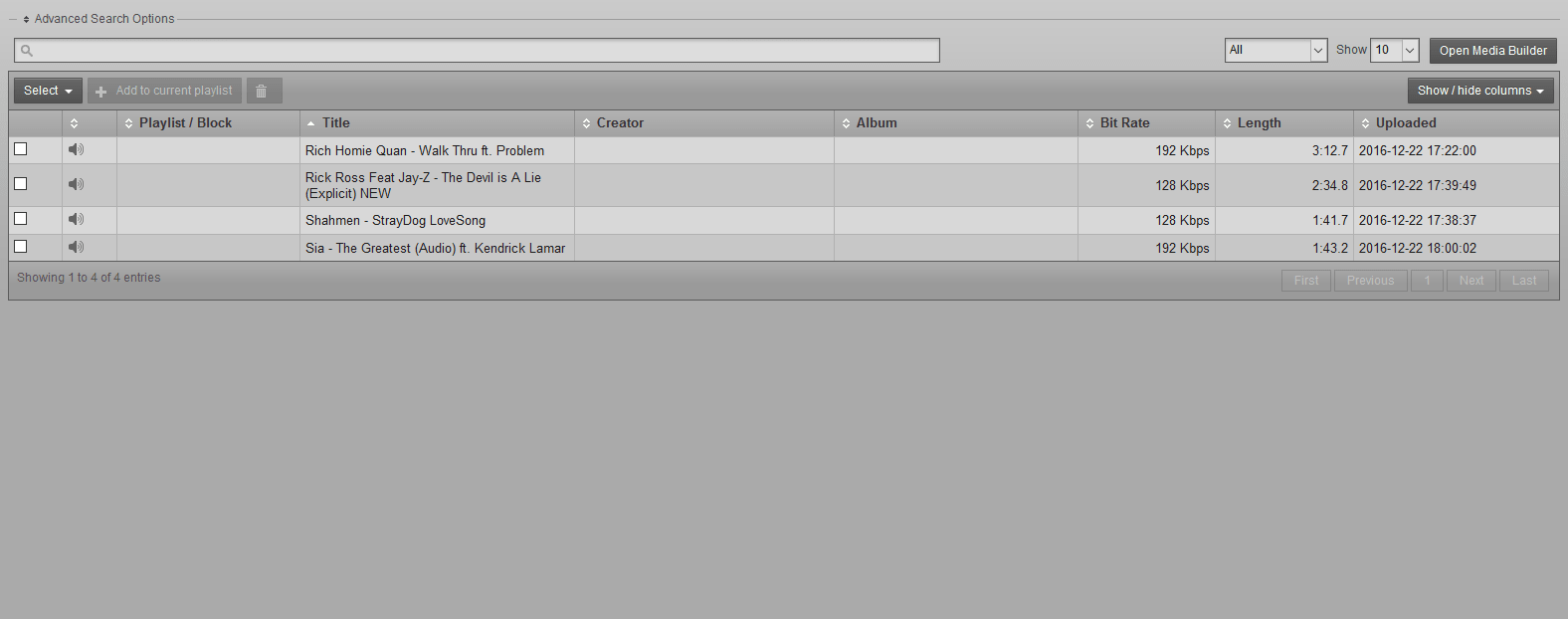
#Cloud radio automation tv
The major difference between live streams and file playout is that live streams are delivered in real time and the pacing of the streams is critical for TV viewing, meaning that the playout has to decode the stream and present it to the linear system on time-a more technically complex process. Just as cloud broadcasters can move files around, they can also move live streams around. Live Stream: Where a linear playout is a file, a live program is a stream. The playlist of files includes the TV program, ads submitted by advertisers, and internal promotions (other shows or events on the network, often shown just prior to returning to programming).

Linear playout includes various files ordered in a way to govern the TV viewing experience.

Linear Playout: A cloud broadcaster with a channel and content rights needs to assemble the content into a sequential schedule of events, or a playlist, called linear playout. Cloud broadcasters use it to ingest, move, and retrieve TV content within AWS. In addition to files, AWS allows for media transport via AWS Elemental MediaConnect, which is used for moving live video. Transport: The AWS global network consists of regions around the world, and allows for fast, easy, and cost-efficient transportation of files. It may be a part of a fully integrated workload that includes Media Asset Management (MAM), editing, and a Content Management System (CMS). Storage is used for many things in a TV broadcast architecture. Content that is less frequently accessed can live in longer-term storage including Amazon S3 Glacier and Amazon S3 Deep Archive. Content needed for a playout server in the short term can be stored on Amazon S3 for its high reliability and speed. Media content in cloud storage is available for transport and/or playout. Storage: Bringing TV broadcast content to audiences starts with storage. The TV broadcast distribution chain in the cloud comprises four discrete parts: Content storage, transport, playout, and distribution.

Consolidation or deprecation of facilities.Flexibility to change anything at any time.Operational efficiency through automation.Today, cloud broadcasters are finding AWS Media & Entertainment solutions useful for the following purposes: Purpose-built media services available in the cloud began providing an alternative to long and locked hardware refresh cycles. The flexibility of the cloud combined with new media services gave TV broadcasters new choices and opportunities they hadn’t had before.Īs new video codecs, container formats, and other improvements emerged, TV broadcasters had the flexibility to take advantage of them and, most important, to scale resource use up and down as needed. Traditionally, the technology concerns of every TV broadcast operation consisted of four parts, each a top priority: video latency, video quality, quality of service/resilience/reliability, and cost.įor many years, these were the fundamental technological challenges anyone working with TV broadcasters had to meet-until the pace of TV technology innovation sped up and a new, fifth priority joined the list: flexibility, meaning, the ability to experiment with new business models and make changes quickly, at low cost, and at low risk.


 0 kommentar(er)
0 kommentar(er)
